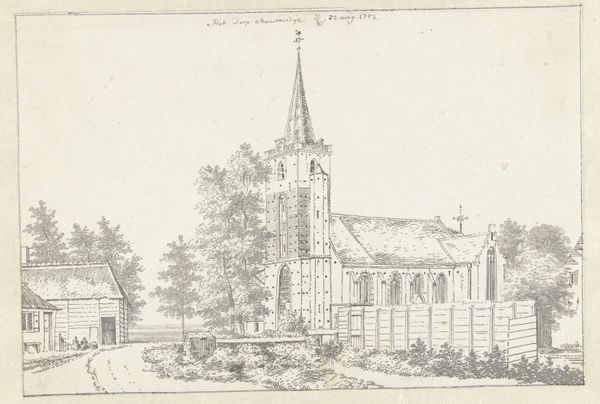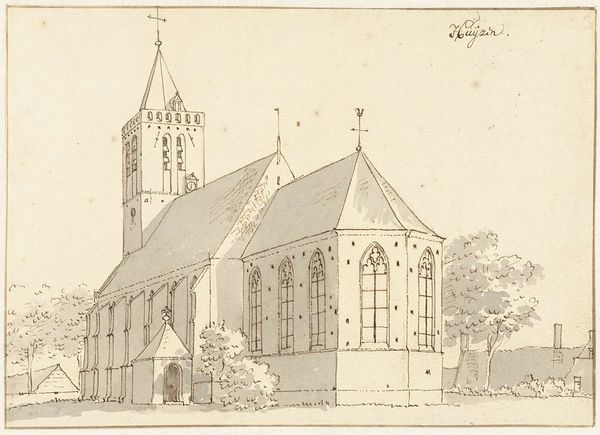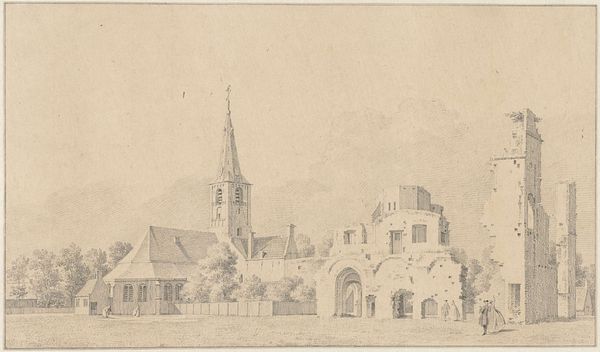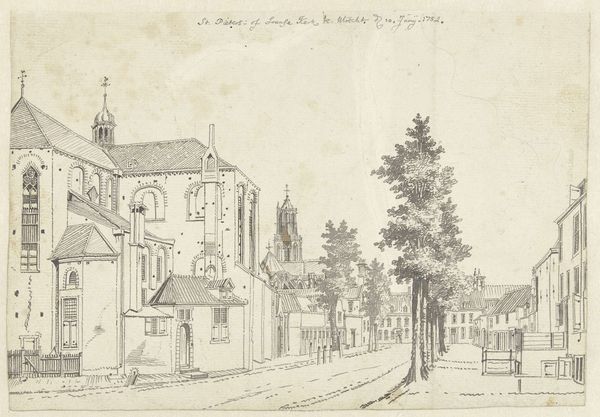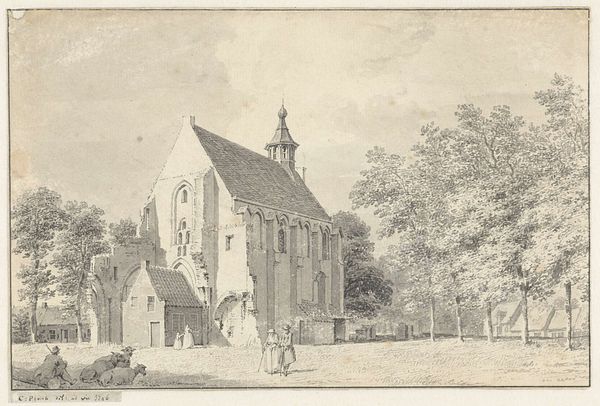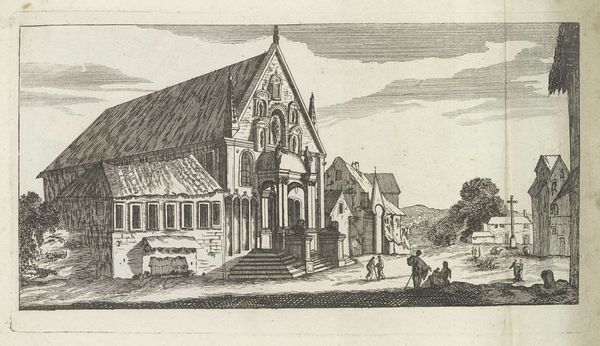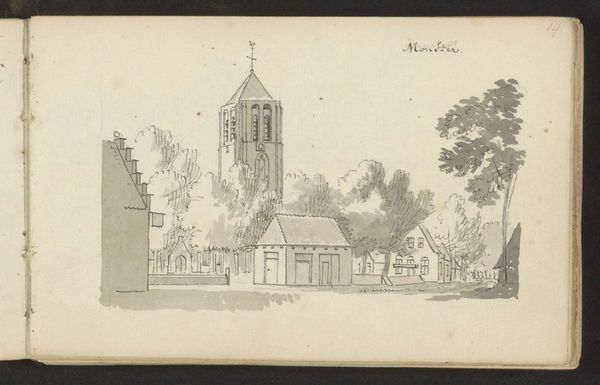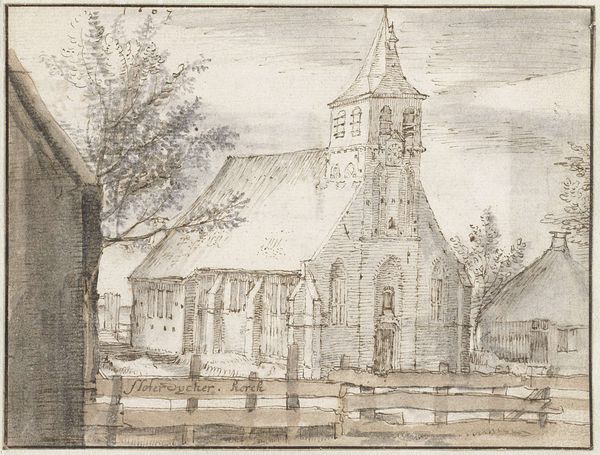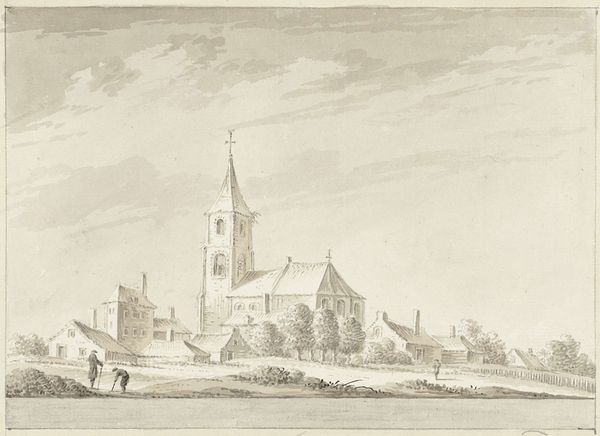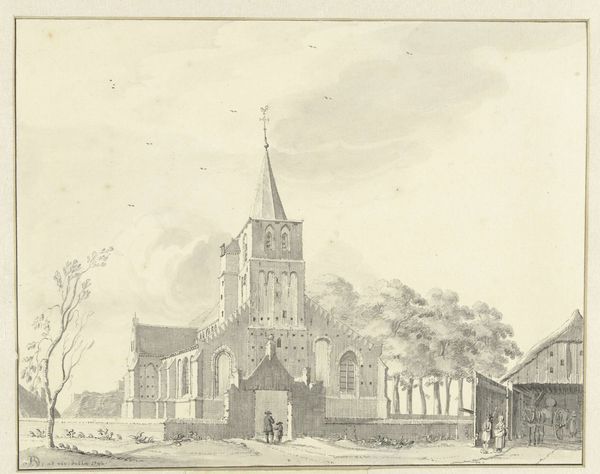
drawing, paper, ink
#
drawing
#
baroque
#
landscape
#
paper
#
ink
#
cityscape
#
genre-painting
Dimensions: height 121 mm, width 205 mm
Copyright: Rijks Museum: Open Domain
Curator: Looking at Jan de Beijer’s drawing, "The Church at Asperden, Germany," likely created between 1744 and 1745, one immediately notes its delicate balance between architectural precision and the softness of the surrounding landscape. What strikes you first about this work rendered in ink on paper? Editor: Well, I'm immediately drawn to the tonal range. It’s a surprisingly gentle and almost nostalgic image considering it’s of a solid, presumably powerful, religious structure. There's a softness to the light that really speaks to me, it’s very inviting and calming, and what are those crosses acting like posts? It’s intriguing. Curator: Precisely! De Beijer was commissioned to document specific locations and landmarks, but often included people engaged in daily activities. He documented aspects of burgeoning public life while working under civic directive. Those crosses are a striking detail, but it might actually denote land demarcations rather than specific religious indicators; however, that requires further contextual exploration. How does it affect the formal composition for you? Editor: It adds a spatial dimension. These repetitive forms almost seem to create a dialogue with the architectural rhythm of the church. Note the layering, too. We have these darker tones used at the very left acting like a visual anchor. Without it, the rest of the building seems like it might float right out of frame! The artist has done so much with so few distinct visual events. Curator: It also prompts one to consider what meanings the audience derived from viewing the work. Was the location of Asperden selected because of some unique significance for that viewership at the time? How does the location impact this reception? The choice to record that specific landscape at that particular time certainly underscores something of a perceived or felt imperative, a perceived community need. Editor: True, and observing the fineness of the strokes and the limited use of contrast serves to distill the scene down to the essentials. This highlights an idealized purity rather than stark realism. These subtle variations—they work harmoniously to underscore the primary subject in a pleasing manner, and not through any dramatic formal manipulations. Curator: It encourages a wider consideration, perhaps of this area’s role in shaping Dutch-German relations. Editor: Indeed. Considering just how he has captured such nuance and emotion is remarkable! Curator: Ultimately, this seemingly simple landscape reveals a layered complexity about art and society. Editor: Absolutely, I find myself still discovering new things as I visually unpack the many components here.
Comments
No comments
Be the first to comment and join the conversation on the ultimate creative platform.

